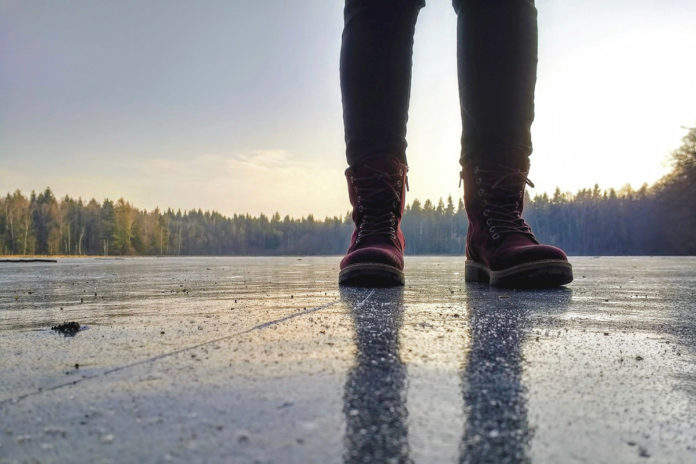During the pandemic, we are all walking on thin ice, some more than others. In my case, I didn’t know until…THE STROKE.
A couple of weeks ago, I was putting the finishing touches on my article about the L.A. riots when I suffered a major blood vessel blockage in my brain. I stood at my writer’s table near the window when it happened. If you had peeked in, you would have seen me bobbing like a buoy in a storm at sea. Then, I fell to the floor and crawled inch-by-inch to my wife in the bathroom.
Interestingly, I also recall trying to come up with something meaningful to say. Whether it was the writer in me, or just my selfish side acting out; I wanted my last words to mean something, not just “cul niiine wah wah” (call 911). I wanted to get “something on page” before I tapped out. Where is my laptop? I couldn’t remember. Maybe that is a good thing. With my persnickety personality, who knows what I might have put down or blabbered.
The stroke quickly overwhelmed any thought I had about leaving a legacy behind. I wish I had said something with my clenched fist raised high like in the dystopian movie Soylent Green – the final scene when Charlton Heston thrusts his bloody fingers in the air with his last breath, “Soylent Green is people!” Instead, I mumbled nonstop.
While in the throes of a stroke, there was no doubt in my mind that THIS is what it feels like just before you die. I was scared. Nothing poetic about that. The only thing on my mind was to survive a little longer. I held my limp writing hand with my left hand until it too started to numb. When the paramedics arrived, all I can remember is trying to tell my wife to stop the family dog from barking. Hardly a thing I’m proud of.
The paramedics rushed me to Huntington Memorial Hospital during the riot curfew. The streets were empty, so I got to the Emergency Room in record time. The CT scan revealed a complete blockage of the left posterior artery in my brain. The emergency medical team assembled to administer the tPA (“Super Drano” clot-buster treatment). In minutes my normal functioning returned. I use the term “normal” loosely because I was a real card in the hospital after surgery. I got a kick out of trying to entertain the hospital staff over the next three days of tests.
That brings me to now. I’m currently dealing with post-stroke tests, back hernia, and being diagnosed with anxiety disorder all since the stay-at-home order first began. In just over three months, I found myself aboard the sinking ship S.S. Pandemic. I’m not the only one. And you may be having trouble coping during this time as well.
Seeking help for your mental health
The coronavirus is unpredictable. The pandemic is an invisible presence in our lives. It’s all around us with no known cure. It puts people out of work, upends our lifestyle for the foreseeable future, and it’s deadly. If you are already at risk mentally, attempting to deal with stress on your own is tantamount to being pushed off a cliff to the rocky shore below. That never goes well.
Consider this: COVOD-19 is the frozen lake, and we are all skating on thin ice.
My family moved to upstate New York during my senior year in high school. That first winter, I tried ice skating on a frozen lake and discovered I suck at it. All I can recall (except for falling hard on the ice several times) is the occasional cracking sound. My new friends convinced me this was normal, and to scare the California kid, they said, “if it’s thin ice and you fall through, you’re f***d because the ice is too thin for us to save you.” They all laughed, adding, “That rarely happens.”
Since seeking assistance for mental health issues in America could be a ‘new thing’ to some of us, you may resist getting the help you need. The good news is: seeking such consultation is a sign of strength. Nearly everyone is dealing with fearful thoughts related to the pandemic. Today is the perfect time to seek professional help. It is an act of love to yourself and others who love you. And we all can use a little more love right now.















.png)







